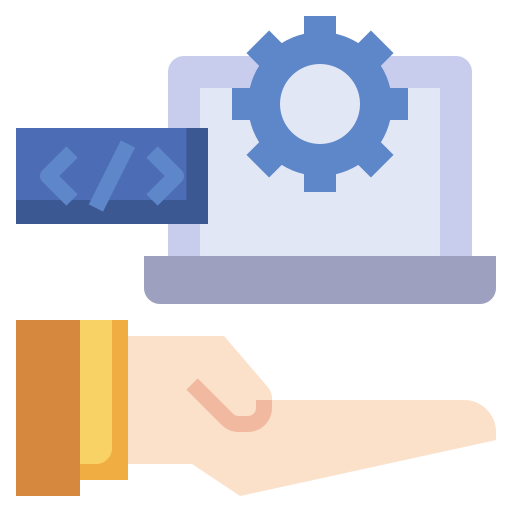Table of Contents
- Understanding E-commerce Fundamentals
- Selecting the Right Technology Stack
- Designing for User Experience (UX) and User Interface (UI)
- Implementing Core E-commerce Features
- Optimizing for SEO and Digital Marketing
- Testing, Launching, and Maintaining Your Site
Introduction
Welcome to your go-to resource for eCommerce website development! This guide is specifically designed for developers who are eager to create robust, scalable, and high-performing online stores.
In today’s fast-paced digital landscape, the need for seamless, secure, and user-friendly e-commerce experiences is more critical than ever. This growing demand not only challenges developers to push the boundaries of innovation but also opens up numerous opportunities to design and build solutions that truly make an impact.
Why Focus on eCommerce Development?
E-commerce has revolutionized the way businesses operate and connect with consumers worldwide. As a developer, your role is pivotal in translating business objectives into functional and user-centric websites that drive sales and foster customer loyalty. Whether you’re diving into e-commerce development for the first time or honing your skills further, mastering the intricacies of building effective online stores is essential for staying competitive in the industry.
Key Sections Explored:
(1) Understanding the Fundamental Principles of E-commerce
Overview of E-commerce Business Models
- Business-to-Consumer (B2C)
- Business-to-Business (B2B)
- Consumer-to-Consumer (C2C)
- Consumer-to-Business (C2B)
Key Principles and Considerations
a. Customer Experience and Interface Design:
- Personalization: Tailoring user experiences based on preferences and behavior analysis.
- Usability: Intuitive navigation and responsive design across devices to enhance user engagement.
- Accessibility: Ensuring compliance with accessibility standards to reach diverse audiences.
b. Security and Data Privacy:
-
-
- Secure Transactions: Implementing SSL certificates and robust encryption protocols for secure payment processing.
- Data Protection: Compliance with data privacy laws (e.g., GDPR) to safeguard consumer information and build trust.
-
c. Scalability and Performance:
-
-
- Scalable Architecture: Designing systems capable of handling increasing traffic and transaction volumes.
- Performance Optimization: Monitoring website performance, load times, and server response to deliver seamless user experiences.
-
(2) Choosing the Right Technology Stack:
1. Understanding the Components of a Technology Stack
A technology stack typically consists of several layers, each serving a specific purpose in the development and operation of an e-commerce website:
-
- Front-end Development
- Back-end Development
- E-commerce Platforms
- Payment Gateways and APIs
2. Factors to Consider in Choosing a Technology Stack
-
- Scalability
- Security
- Performance
- Cost and Budget:
3. Case-specific Considerations
-
- Customization Needs: Assessing the flexibility of platforms and frameworks to accommodate unique business requirements.
- Integration Requirements: Compatibility with existing systems (ERP, CRM) and third-party services (shipping, inventory management).
4. Emerging Trends and Technologies
-
- Headless Commerce: Separating the front-end presentation layer from the back-end functionality for greater flexibility and omnichannel integration.
- Progressive Web Apps (PWAs): Combining web and mobile app functionalities for faster, app-like experiences on mobile devices.
- Serverless Architecture: Using cloud services (AWS Lambda, Azure Functions) for scalable, event-driven applications without managing infrastructure.
(3) Implementing Core Functionality:
Dive into essential features such as product catalog management, shopping cart integration, secure payment gateways, and order fulfillment systems
1. Product Catalog Management
-
- Product Listings: Create and manage product listings with descriptions, images, pricing, and categories.
- Inventory Tracking: Keep track of stock levels, manage reordering, and display availability to customers.
2. Shopping Cart and Checkout
-
- Cart Management: Allow users to add, remove, and edit items in their shopping cart.
- Checkout Process: Streamline the checkout process with easy-to-use forms for shipping and billing information.
- Order Summary: Provide a detailed order summary before final purchase.
3. Payment Processing
-
- Payment Gateways: Integrate secure payment gateways like PayPal, Stripe, or Square.
- Transaction Security: Ensure secure transactions with SSL certificates and PCI compliance.
4. User Accounts and Authentication
-
- User Registration: Enable account creation with secure login credentials.
- Profile Management: Allow users to manage their profiles, view order history, and save payment methods.
- Authentication: Implement robust authentication methods, including password recovery and two-factor authentication.
5. Order Management
-
- Order Tracking: Provide order tracking features for customers to monitor their shipments.
- Order Fulfillment: Streamline order processing, packing, and shipping workflows for efficiency.
6. Customer Support
-
- Support Channels: Offer various support channels like live chat, email, and phone support.
- FAQ and Help Center: Create a comprehensive FAQ section and help center for common issues and questions.
7. Analytics and Reporting
-
- Sales Reports: Generate detailed sales reports to monitor performance.
- Customer Insights: Use analytics tools to gain insights into customer behavior and preferences.
(4) Designing for Optimal User Experience
Learn UX/UI design principles tailored for e-commerce, ensuring intuitive navigation, accessibility, and conversion optimization.
(5) Integrating SEO and Marketing Strategies
To ensure your e-commerce website stands out in a crowded marketplace, it’s essential to implement effective SEO techniques and digital marketing strategies. These approaches can significantly enhance visibility, drive targeted traffic, and maximize your return on investment (ROI).
1. SEO Techniques
a. On-Page SEO
-
-
- Keyword Research
- Meta Tags
- Product Descriptions
- Image Optimization
- Internal Linking
-
b. Technical SEO
-
-
- Site Speed
- Mobile Optimization
- Secure Sockets Layer (SSL
- Structured Data
-
c. Off-Page SEO
-
-
- Backlink Building
- Social Signals
- Online Reviews
-
2. Digital Marketing Strategies
a. Content Marketing
-
-
- Blogging
- Video Marketing
- Email Marketing
-
b. Social Media Marketing
-
-
- Platform Selection
- Content Strategy:
- Advertising:
-
c. Pay-Per-Click (PPC) Advertising
-
-
- Google Ads
- Retargeting
- A/B Testing
-
3. Analytics and Performance Monitoring
-
-
- SEO Analytics
- Campaign Tracking
- User Behavior Analysis
-
(6)Testing, Deployment, and Maintenance:
1. Rigorous Testing
a. Types of Testing
-
-
- Unit Testing
- Integration Testing
- System Testing:
- User Acceptance Testing (UAT)
- Performance Testing
- Security Testing
- Regression Testing
-
b. Automation and Continuous Testing
-
-
- Test Automation
- Continuous Integration (CI)
-
2. Seamless Deployment Strategies
a. Deployment Planning
-
-
- Version Control
- Branching Strategy
- Deployment Pipelines
-
b. Zero Downtime Deployment
-
-
- Blue-Green Deployment
- Canary Deployment
- Feature Toggles
-
c. Rollback Strategies
-
-
- Instant Rollback
- Database Migrations
-
3. Proactive Maintenance
a. Monitoring and Logging
-
-
- Real-time Monitoring
- Log Management
-
b. Security and Compliance
-
-
- Regular Audits
- Compliance Checks
-
c. Performance Optimization
-
-
- Load Balancing
- Caching Strategies
- Scalability Planning
-
d. User Feedback and Continuous Improvement
-
-
- Feedback Mechanisms
- Iterative Development
-
FAQs on eCommerce Web Development
1. What is eCommerce web development?
Creating websites that allow businesses to sell products and services online, including design, backend setup, and payment integration.
2. What are essential features of an eCommerce website?
-
- User-friendly navigation
- Product catalog
- Shopping cart
- Secure checkout
- User accounts
- Order management
- Mobile responsiveness
- Customer support
3. What platforms are popular for eCommerce web development?
-
- Shopify
- WooCommerce
- Magento
- BigCommerce
- OpenCart
4. How important is mobile optimization for an eCommerce website?
Critical, as many shoppers use mobile devices. Ensures a seamless user experience and better search engine rankings.
5. What is a payment gateway, and which ones should I consider?
A service that processes online payments. Consider PayPal, Stripe, Square, Authorize.Net, and Amazon Pay.
6. How can I ensure the security of my eCommerce website?
-
- Implement SSL certificates
- Use secure payment gateways
- Regularly update software
- Perform security audits
- Use strong passwords and two-factor authentication
7. What are some best practices for SEO in eCommerce?
-
- Keyword research
- On-page optimization
- Technical SEO
- Content marketing
- Link building
8. How do I handle inventory management in an eCommerce site?
Use inventory management software like TradeGecko, SkuVault, Zoho Inventory, Cin7, or Shopify’s built-in features.
9. What analytics tools should I use to monitor my eCommerce website’s performance?
-
- Google Analytics
- Google Search Console
- Hotjar
- Kissmetrics
- Mixpanel
10. How can I improve the user experience (UX) on my eCommerce website?
-
- Streamlined navigation
- Fast load times
- Clear product information
- Simplified checkout
- Responsive design
- Customer support
Conclusion
Join us on this journey to elevate your e-commerce development skills and empower businesses to thrive in the digital marketplace. Whether you’re passionate about creating captivating user experiences or optimizing backend functionalities, this guide provides the comprehensive resources you need to succeed in eCommerce website development.















